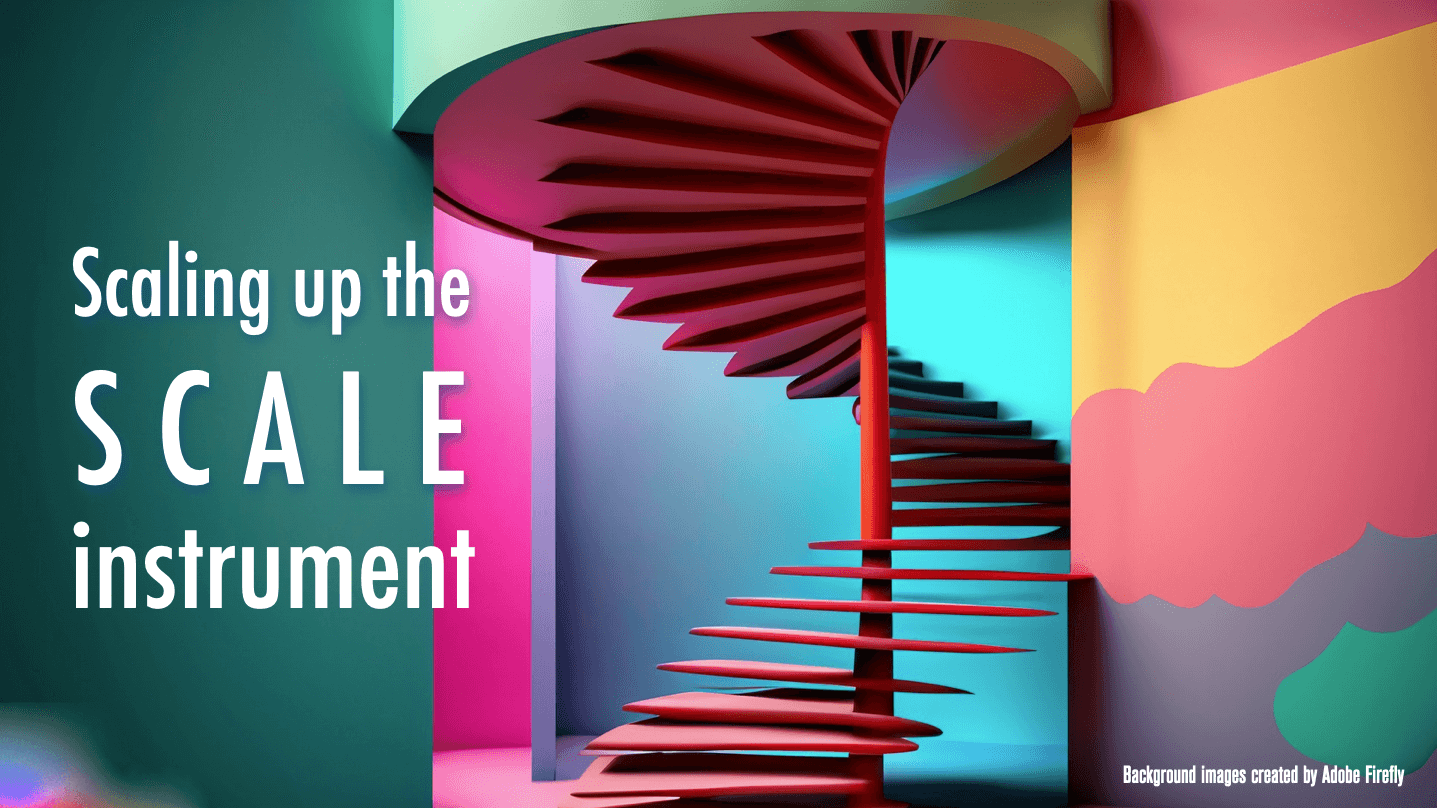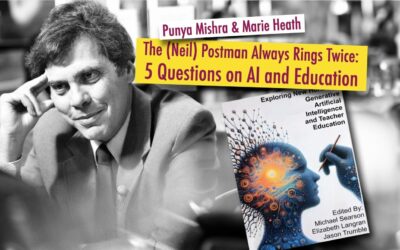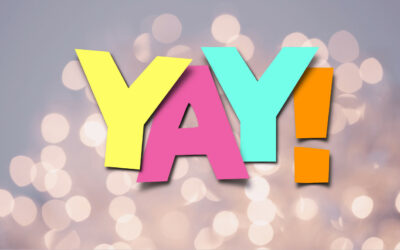Back in 2017, Carmen Richardson and I wrote an article (Richardson & Mishra, 2017) in which we proposed an instrument (Support of Creativity in Learning Environment: SCALE) designed to assess the ways in which a learning environment supports student creativity. SCALE is a short, focused, and informal instrument aimed, not to evaluate teachers, but rather to gather information about practice. SCALE measures three different aspects of a learning environment: Learner Engagement; the Physical Environment; and the Learning Climate.
More recently, I had a chance to revisit the instrument as part of some conversations with Danah Henriksen and Lauren Woo for a paper we were writing (now published and included below). As part of this, Lauren did a somewhat deep dive of the literature around the use of the instrument, and I was pleasantly surprised to learn that the instrument has been cited a decent number of times (Google Scholar citations). More importantly, though, the instrument has been used by others in their research. Below is a short list of articles that have used the instrument with brief descriptions of each, with two exceptions. One focuses on how the SCALE instrument can be reverse engineered to help us design more creative learning environments. The second is a review article of observational methods that measure creativity in some form or the other. Note: Citations are provided in reverse chronological order).
A huge shout out to Lauren for her work in finding these resources.
Henriksen, D., Woo, L., & Mishra, P. (2023). Designing for Creative Learning Environments: Putting Pedagogical Principles into Action. In R. E. West & H. Leary (Eds.), Foundations of Learning and Instructional Design Technology: Historical Roots & Current Trends. EdTech Books. https://edtechbooks.org/foundations_of_learn/creativity
In this chapter, we discuss fundamental principles that define a creative learning environment and how these can be integrated into pedagogical design. We propose the use of the SCALE (Support for Creativity in a Learning Environment) instrument (Richardson & Mishra, 2018) as a frame for understanding and evaluating the characteristics of creative learning environments. Using the SCALE’s constructs—characteristics of the environment, learning climate, and learner engagement—as benchmarks, we consider how these offer criteria to build into the design of learning environments. This chapter discusses applications of these principles across various environments, including online and blended spaces, acknowledging that different environments present distinctive affordances, opportunities, constraints, and possibilities. Our implications take a future-oriented perspective on online creative learning environment design in both research and practice.
Aragon, A. J. (2023). Creative Classroom Climates (Order No. 30250186). Available from ProQuest Dissertations & Theses Global. (2780742075).
This study used the SCALE instrument to investigate how high school teachers nurture a classroom environment that promotes creativity, as well as whether their self-reported creativity is related to the climate they create. The study found that teachers primarily fostered a creative classroom environment through the Learning Climate component of SCALE and that their self-perceived creativity positively correlated with the overall creative climate of their classrooms.
Chen, C. C., Chen, H. R., & Wang, T. Y. (2022). Creative Situated Augmented Reality Learning for Astronomy Curricula. Educational Technology & Society, 25(2), 148-162. https://www.jstor.org/stable/48660130
Employed SCALE tool to measure students’ perception of a simulated augmented reality learning environment in elementary school science courses.
Bereczki, E. O., & Kárpáti, A. (2021). Technology-enhanced creativity: A multiple case study of digital technology-integration expert teachers’ beliefs and practices. Thinking Skills and Creativity, 39, 100791. https://doi.org/10.1016/j.tsc.2021.100791
Used SCALE tool to collect observation data on the physical and psychosocial characteristics of classrooms of technology-integration expert secondary school teachers from six different curricular areas.
de la Peña, D., Lizcano, D., & Martínez-Álvarez, I. (2021). Learning through play: Gamification model in university-level distance learning. Entertainment Computing, 39, 100430. https://doi.org/10.1016/j.entcom.2021.100430
Designed gamification model for distance university education with the goal of strengthening the interactivity of students in the classroom and preventing early dropout.
Ozkan, G., & Umdu Topsakal, U. (2021). Exploring the effectiveness of STEAM design processes on middle school students’ creativity. International Journal of Technology and Design Education, 31(1), 95-116. https://doi.org/10.1007/s10798-019-09547-z
Administered pre- and post-tests to determine if a STEAM design process program developed for teaching middle school students enhanced their verbal and figural creativity.
Hamid, N. H. A., & Kamarudin, N. (2021). Assessing Students’ Mathematics Achievement and Mathematical Creativity using Mathematical Creative Approach: A Quasi-Experimental Research. Asian Journal of University Education, 17(2), 100-112. https://doi.org/10.24191/ajue.v17i2.13399
Administered pre- and post-tests to determine the impact of a creative mathematical approach on mathematical creativity and mathematics achievement and to explore the relationship between mathematical creativity and achievement in mathematics among high school students.
Huang, C. E. (2020). Discovering the creative processes of students: Multi-way interactions among knowledge acquisition, sharing and learning environment. Journal of Hospitality, Leisure, Sport & Tourism Education, 26, 100237. https://doi.org/10.1016/j.jhlste.2019.100237
Administered surveys to determine if (a) “cooperation culture mediates the positive relationship between knowledge acquisition and the creative process,” (b) “the creative process mediates the positive relationship between cooperation culture and creativity,” (c) “the searching and encoding process mediates the positive relationship between problem identification and idea generation,” and (d) “the idea generation process mediates the positive relationship between the searching and encoding process and verification” for university students majoring in tourism and hospitality.
Ovbiagbonhia, A. R., Kollöffel, B., & Brok, P. D. (2019). Educating for innovation: students’ perceptions of the learning environment and of their own innovation competence. Learning environments research, 22(3), 387-407. https://doi.org/10.1007/s10984-019-09280-3
Administered survey to determine if students perceived the Built Environment programs (at eight Universities of Applied Sciences in the Netherlands) to be supportive learning environments that foster innovation competence.
Katz-Buonincontro, J. and Anderson, R.C. (2020), A Review of Articles Using Observation Methods to Study Creativity in Education (1980–2018). Journal of Creative Behavior, 54: 508-524. https://doi.org/10.1002/jocb.385
This article is somewhat different from the rest in that it is an integrative literature review of published articles (between the years 1980 – 2018) that used either quantitative or qualitative observation methods to research creativity in learning contexts.
Wahyudi, W., & Winanto, A. (2018). Development of project based blended learning (PjB2L) model to increase pre-service primary teacher creativity. Jurnal Pendidikan dan Pengajaran, 51(2), 93-109. https://doi.org/10.23887/jpp.v51i2.12795
Developed project based blended learning model to increase pre-service primary teacher students’ creativity in designing lesson plans.




0 Comments